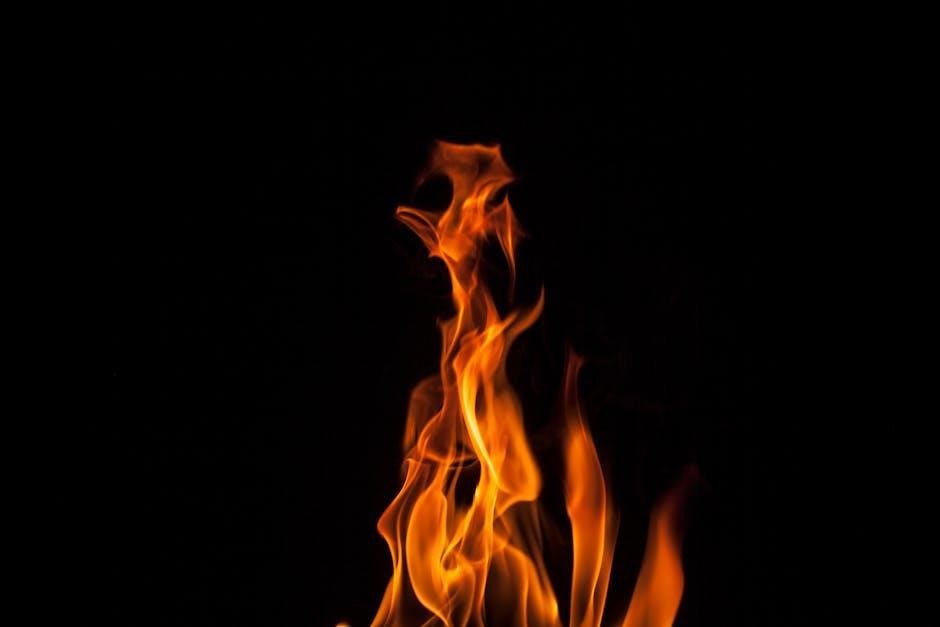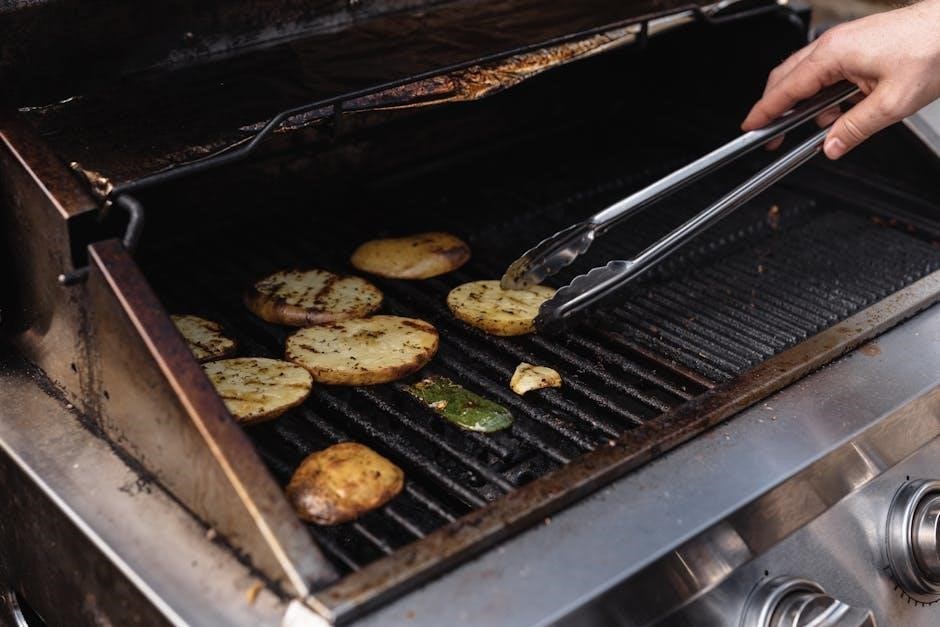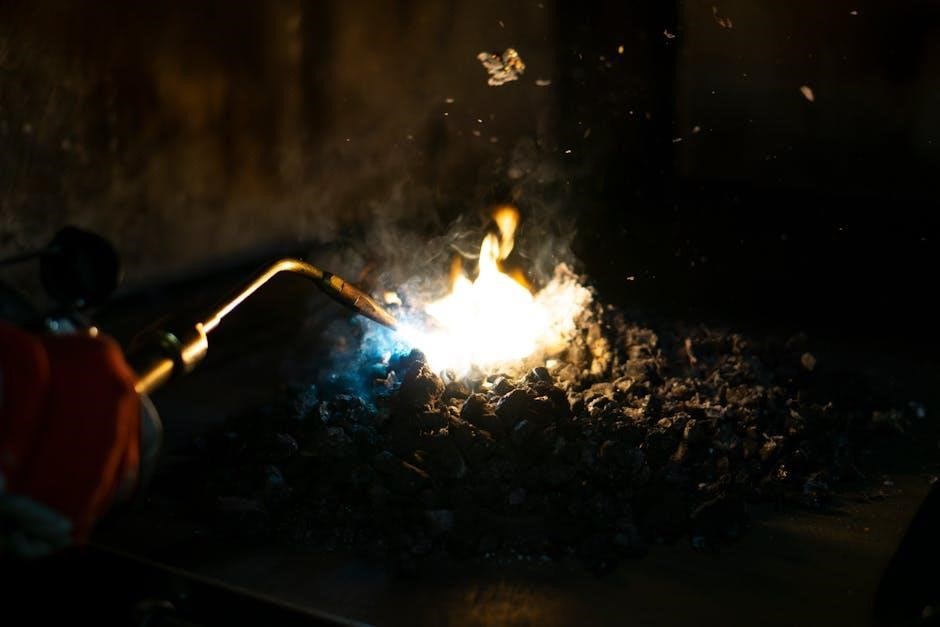
heat press temperature guide vinyl
Understanding Heat Transfer Vinyl (HTV)
Heat Transfer Vinyl (HTV) is a versatile material that adheres to fabrics and surfaces when heat and pressure are applied, creating vibrant, durable designs. It’s commonly used for custom apparel, textiles, and crafts, offering a professional finish with minimal effort.
What is Heat Transfer Vinyl?
Heat Transfer Vinyl (HTV) is a type of vinyl with a heat-activated adhesive backing. When applied with heat and pressure, it permanently bonds to fabrics and other surfaces, creating durable designs. HTV is widely used for custom apparel, crafts, and signage. It comes in various finishes, such as glossy, matte, metallic, and glitter, offering versatility for different projects. The material is cut using plotters or craft cutters, and its adhesive properties are activated when exposed to specific temperatures, typically between 260°F and 300°F, depending on the vinyl type and fabric.
The Application Process of HTV
The application process of Heat Transfer Vinyl involves cutting the design, weeding excess vinyl, and applying it to the substrate using a heat press. The vinyl is placed on the fabric, and heat and pressure are applied for a specified time to activate the adhesive. Proper alignment and preheating the fabric ensure a smooth application. After pressing, the carrier sheet is removed, leaving the design intact. Incorrect temperature or pressure can lead to adhesion issues or damaged vinyl, emphasizing the importance of following guidelines for optimal results.

Factors Affecting Heat Pressing
Heat pressing success depends on temperature, time, pressure, and fabric type. Proper settings prevent wrinkles, ensure adhesion, and avoid damage, crucial for achieving professional-quality transfers on various materials.
Time, Temperature, and Pressure: The Key Elements
Time, temperature, and pressure are critical for successful heat pressing. Temperature ranges between 260-320°F, with presses lasting 10-30 seconds. Pressure must be firm and even, ensuring vinyl adheres without damage. Incorrect settings can cause peeling or discoloration. Adjustments may be needed based on vinyl type and fabric thickness, ensuring optimal results. Proper calibration ensures designs last longer and look professional. Always refer to manufacturer guidelines for specific vinyl requirements to achieve the best outcome.
How Different Fabrics React to Heat Pressing
Various fabrics react differently to heat pressing, requiring tailored settings. Cotton and polyester blends typically need higher temperatures, while delicate fabrics like silk or nylon may require lower heat to avoid damage. Thickness and weave also play a role; denser fabrics may need more pressure or time. Testing on scrap fabric is recommended to ensure compatibility and avoid scorching or discoloration. Specialty fabrics, such as fleece or stretchy materials, may need adjustments in pressure to prevent stretching or uneven adhesion.

Choosing the Right Vinyl for Your Project
Selecting the ideal vinyl depends on your project’s requirements, including fabric type, durability needs, and desired finish. Popular options like Siser EasyWeed and Thermoflex offer excellent versatility and performance.
Popular Types of Heat Transfer Vinyl
Heat Transfer Vinyl (HTV) comes in various types, each suited for specific applications. Siser EasyWeed is a favorite for its ease of use and durability, while Thermoflex offers high performance for intricate designs. Other popular options include Glitter HTV for festive looks, Holographic for eye-catching effects, and Printable HTV for custom prints. Each type has unique properties, making them ideal for different projects, from casual wear to elaborate crafts.
Siser EasyWeed vs. Thermoflex: Which to Use?
Siser EasyWeed and Thermoflex are two popular HTV choices, each with unique benefits. EasyWeed is known for its simplicity and versatility, suitable for most fabrics and easy to cut and weed. Thermoflex, on the other hand, offers superior durability and is ideal for heavy-duty applications. Choosing between them depends on your project’s requirements, with EasyWeed being perfect for everyday use and Thermoflex excelling in high-wear scenarios.

Best Practices for Heat Press Temperature Settings
Optimal heat press temperatures vary by vinyl type, typically ranging from 260°F to 300°F. Always refer to the manufacturer’s guidelines for precise settings to ensure durability and adhesion.
General Guidelines for Heat Press Temperatures
Heat press temperatures typically range from 260°F to 300°F, depending on the vinyl type. Lighter materials like Siser EasyWeed require lower temps (260-270°F), while thicker vinyls need higher settings. Always follow the manufacturer’s guidelines for specific vinyls to ensure proper adhesion and durability. Testing on scrap fabric is recommended to avoid ruining projects. Pressure should be firm but not excessive, and pressing times vary from 10-20 seconds. Adjustments may be needed based on fabric type and thickness for optimal results.
Specific Temperature Settings for Different Vinyls
For Siser EasyWeed, ideal temperatures range from 260°F to 270°F, while Thermoflex requires slightly higher settings, around 280°F. Puff vinyl typically needs lower temperatures, between 240°F and 250°F, to prevent damage. Always refer to the manufacturer’s guidelines for precise settings, as variations exist between brands. Testing on scrap fabric is recommended to ensure optimal results. Adjustments may be necessary based on fabric type and thickness to achieve a smooth, even application.

Troubleshooting Common Heat Press Issues
Common issues include vinyl not adhering, wrinkling, or bubbling. Check temperature, pressure, and time settings. Ensure proper fabric preparation and mirror designs. Test on scrap fabric first.
Why Your Vinyl Might Not Be Adhering Properly
If your vinyl isn’t adhering, check your temperature, time, and pressure settings. Ensure they match the vinyl type and fabric. Clean, dry fabric is crucial. Incorrect vinyl choice for fabric type or insufficient mirroring can cause issues. Test on scrap fabric first to confirm settings. Adjustments may be needed for different materials, like cotton or polyester blends. Proper calibration of your heat press is also essential for consistent results. Always refer to the manufacturer’s guidelines for specific vinyl recommendations.
Fixing Wrinkled or Bubbled Vinyl Applications
Wrinkled or bubbled vinyl can often be corrected by adjusting temperature or pressure. Lower heat may reduce bubbles, while higher pressure helps smooth out wrinkles. Ensure fabric is flat during application. Covering with parchment paper and re-pressing at the right settings can fix minor issues. For severe bubbles, applying heat locally can help vinyl relax. Use a lower temperature if fabric is damaged. Testing on scrap fabric first is recommended to avoid further damage. Proper technique and machine calibration are key to achieving smooth results consistently.

Safety Tips for Using a Heat Press
Always wear protective gear, avoid loose clothing, and keep children and pets away. Place the press on a stable, heat-resistant surface and unplug it when not in use.
Essential Safety Precautions
Always operate your heat press in a well-ventilated area to avoid inhaling fumes from materials. Keep flammable items away and ensure the surface is heat-resistant. Wear protective gloves and goggles to prevent burns or eye damage. Never leave the heat press unattended while in use. Avoid wearing loose clothing that could get caught in the machine. Regularly inspect the press for damage and clean it to prevent dust buildup. Follow the manufacturer’s guidelines for temperature and pressure to avoid accidents. Failure to follow these precautions can lead to serious injury or damage.
Maintenance Tips for Your Heat Press Machine
Regularly clean the heat press to remove residue and debris, ensuring optimal performance. Inspect the heat plate for damage and ensure even heat distribution. Lubricate moving parts to maintain smooth operation. Store the machine in a dry, cool place to prevent rust or damage. Avoid exposing it to extreme temperatures; Always refer to the manufacturer’s manual for specific care instructions tailored to your model. Proper maintenance extends the lifespan and ensures consistent results for your vinyl projects.

Additional Resources and Further Reading
Explore detailed guides and tutorials online for advanced heat pressing techniques. Manufacturer websites offer specific temperature and vinyl recommendations, ensuring optimal results for your projects.
Recommended Guides for Advanced Techniques
For mastering heat press temperature settings, explore advanced guides on vinyl application. Websites like HeatPressFun and VinylCraft offer tutorials on optimizing time, temperature, and pressure for various vinyl types. These resources provide troubleshooting tips and project ideas, ensuring you achieve professional results. They also cover less common materials, like puff vinyl, and share insights on maintaining your heat press machine for longevity and performance.
Manufacturer Recommendations and Support
Consulting manufacturer guidelines is crucial for optimal heat press results. Brands like Siser and Thermoflex provide detailed temperature and time charts tailored to their vinyl types. VEVOR and Tusy heat press manufacturers offer specific settings for their machines, ensuring compatibility. Reaching out to customer support can resolve issues like wrinkled vinyl or adhesion problems. Always refer to the user manual for precise instructions, as settings vary by machine and vinyl type, ensuring durability and professional-grade finishes for your projects.
Related Posts

everquest lvl guide
Stuck in a leveling rut in EverQuest? Our guide cuts through the grind with proven strategies, class tips, and the fastest routes to 85! Level up now!

acs organic chemistry study guide pdf free download
Download our comprehensive organic chemistry study guide PDF. Perfect for students and self-learners! Boost your chemistry knowledge today!

guide pro pants
Discover the ultimate Guide Pro Pants, crafted for professionals seeking durability and comfort. Perfect for any task, these pants are your reliable work partner.